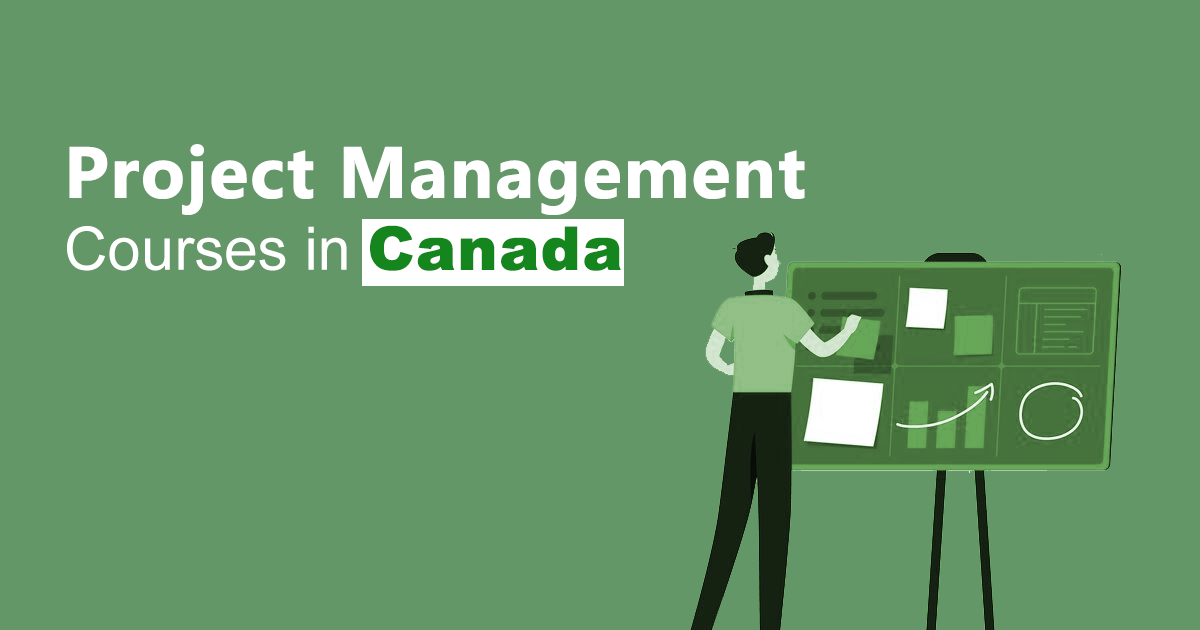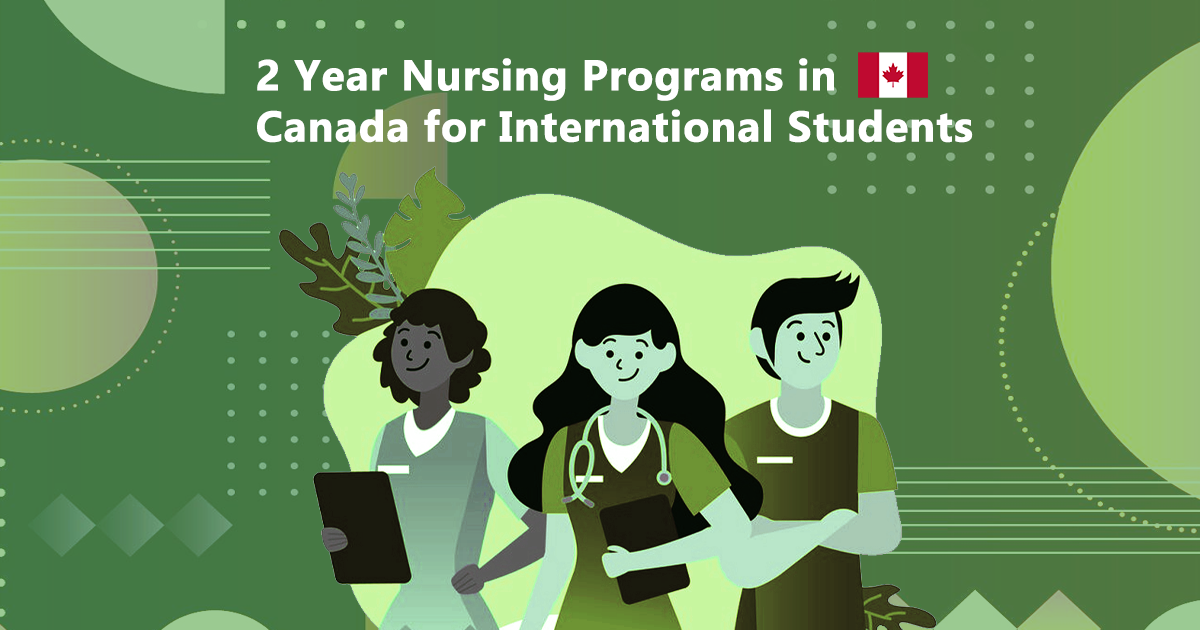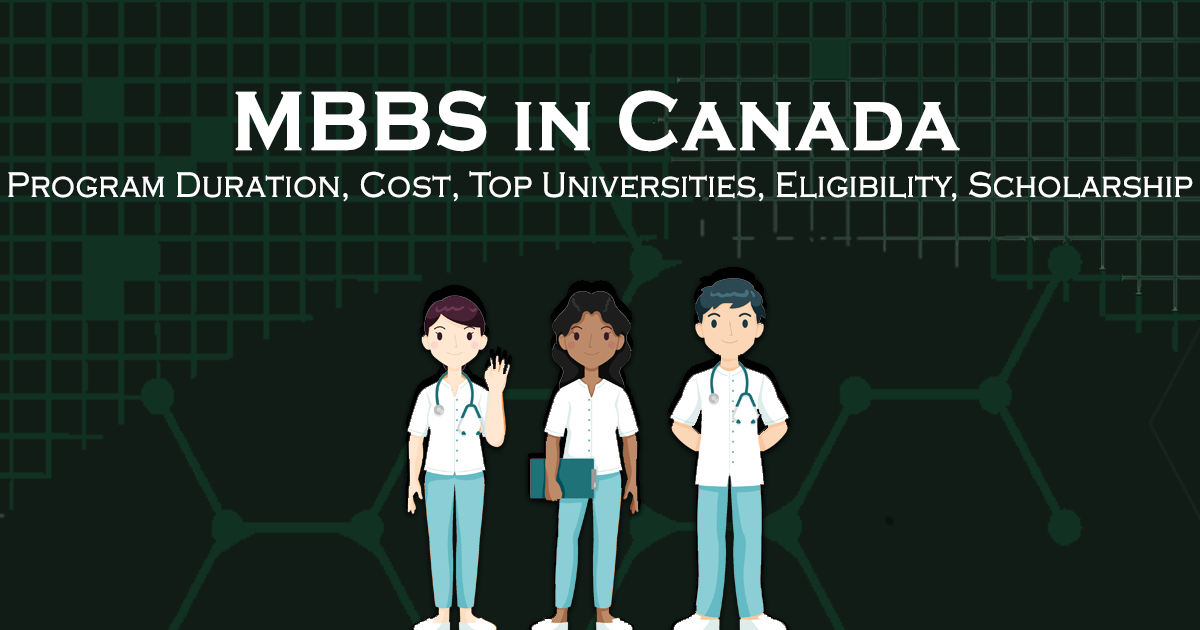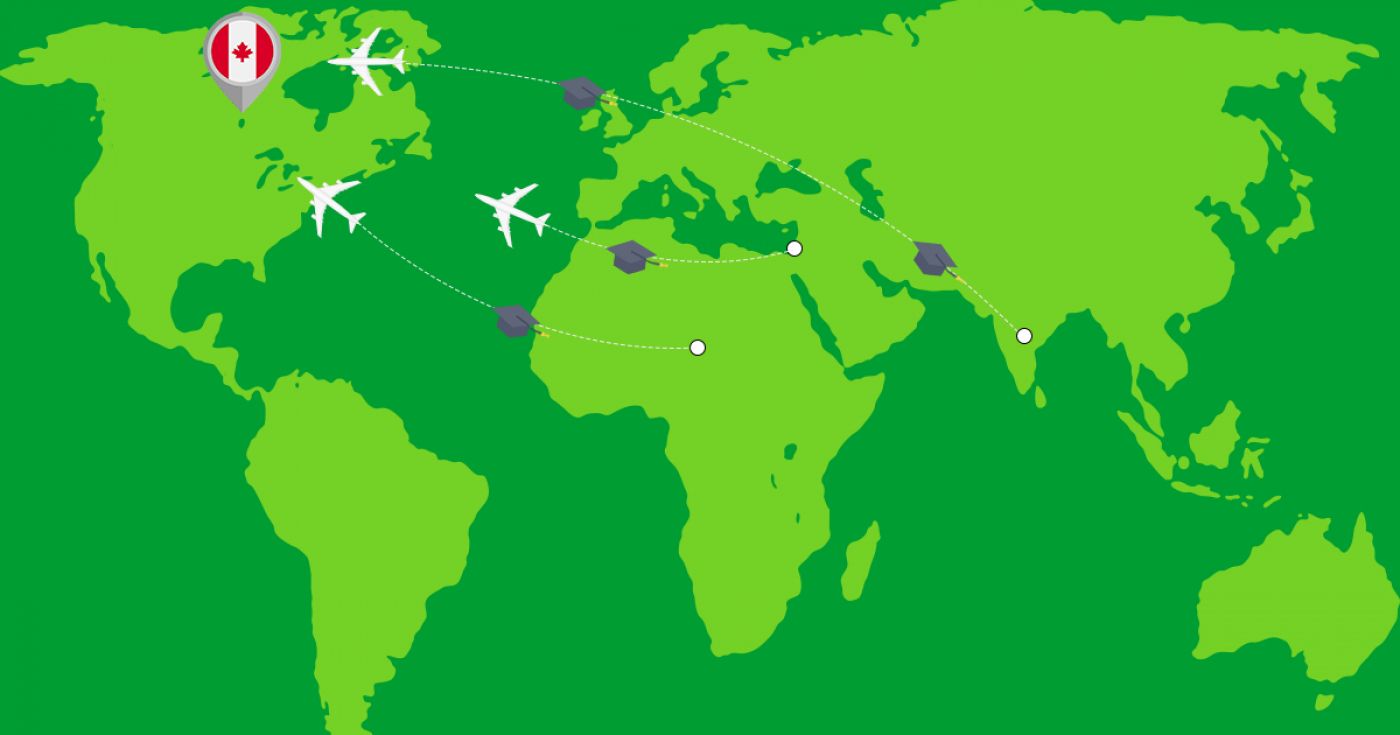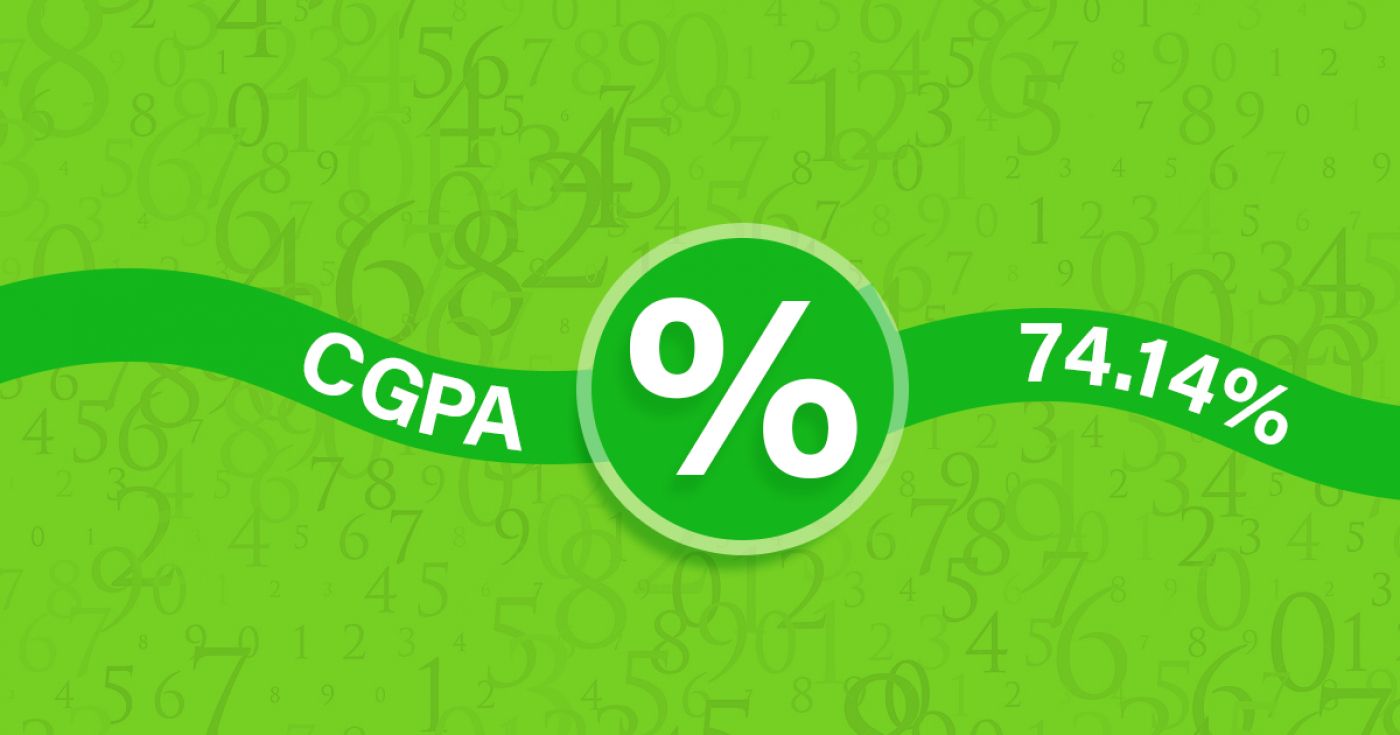Diploma in Fashion Art and Business
at Humber College North Campus Canada
Overview
Fashion is an international business, and Humber’s Fashion Arts and Business diploma program places an emphasis on retail operations from both domestic and international perspectives. You will study marketing, store planning and merchandising, brand management, marketing, social media, event planning, and retail buying. You’ll also learn fashion trend forecasting, sales techniques, and colour and styling analysis while attaining basic knowledge of fashion products and fashion promotion. These skills are then applied to product launches, planning merchandise assortments, styling fashion shoots and the production of fashion events.
Our advisory committee provides regular review and input of curriculum ensuring our program is always on the cutting edge of industry developments.
In first year, courses in the business of fashion – marketing strategies, product knowledge, trend forecasting and web merchandising – give students an overview of this multibillion-dollar industry. In second year, students build on the skills developed on the foundation with wholesale sales, retail buying and operation, photo styling and event planning and budgeting.
Learning Outcomes:
Upon successful completion of the program, a graduate will:
- Differentiate the purposes and functions of and the relationships between various elements within the structure of the fashion industry in order to identify business opportunities, challenges and solutions.
- Define and use correctly the terminology and language of fashion from a business and art perspective in order to communicate effectively with the range of stakeholders in the fashion industry.
- Identify artistic and business trends in order to capitalize on emerging opportunities throughout the stages of product development, manufacturing, distribution and promotion.
- Respond to current market conditions based on detailed analysis of company and/or industry reports.
- Design promotional materials and events using current digital technologies and styling methodologies in order to advance fashion arts and business objectives.
- Employ professional practices which support current business strategies and plans adhering to legal, ethical and sustainable standards appropriate to the fashion industry.
- Create a variety of strategic planning deliverables for achieving measurable goals for fashion merchandising, marketing, operations, finance and sales.
- Conduct vendor negotiations, budgeting, critical path analysis, communications and operations for effective fashion-related promotional events.
- Tailor visual and verbal presentations suitable for various stakeholders (e.g. buyers, senior managers, vendors, customers) to meet their specific requirements.
- Generate social media strategy and content for marketing purposes in order to build product and brand awareness.
- Negotiate mutually profitable business-to-business transactions between parties in the supply chain in order to maximize cost effectiveness.
- Develop professional development plans to set career goals based on self-assessment of strengths, interests and opportunities.
30
Application Processing Days
Under Graduate
Program Level
Fact & Figures
Full Time On Campus
Study Mode
24
Duration
Humber College North Campus
Location
Diploma in Fashion Art and Business Assistant Fee
$16414
Tuition Fee
$12000
Average Cost of Living
$75
Application Fee
Diploma in Fashion Art and Business Admissions Requirements
- Minimum Level of Education Required: To be accepted into this program, applicants must have Grade 12 / High School Diploma or equivalent including the following required course(s):
- Grade 12 English (ENG4C or ENG4U or equivalent)
- Three Grade 11 or Grade 12 C, M or U courses in addition to

Get superfast admissions at top Diploma in Fashion Art and Business institutes in 2024
Benefits of choosing
➤Admission’s guaranteed at Top institutes across the world.
➤Enjoy exclusive application fee waiver’s with Edmissions.
➤Unlimited FREE Counselling sessions with Edmission’s
Experts
➤Get Tips from industry veterans to crack the IELTS exam in 1
week.
➤Assistance with scholarships, loans, forex, student accommodation and visa guidance.
Work Permit Canada
Students who wish to work in Canada require a work permit to do so. A student in Canada can work part-time during the course of his studies and full-time during holidays and semester breaks and post the completion of their course/program.
Rules for getting a part-time work visa in Canada
You can also work part-time on campus at your university.
Work Permit
Duration
Your part-time work permit will be valid for as long as you have a valid study permit.
Working Hours
20 Hours/Week
As a full-time student, you can work for a maximum of 20 hours a week. However, you can work full- time during holidays and breaks.
Document Required to Work in Canada
List
To apply for a work permit, you will need a study permit that mentions that you are allowed to work part-time on campus.
Social Insurance Number
Study Permit
You will need a Social Insurance Number (SIN) to Service Canada. if you wish to work in Canada during the course of your studies. To apply for the same, you need a valid study permit, and you should be a full- time student at a recognized university.

You can work part-time off-campus if you are studying in the Quebec province.
Duration of Work Permit Canada
Your part-time work permit will be valid for as long as you have a valid study permit.
Work Hours Canada
As a full-time student, you can work for a maximum of 20 hours a week. However, you can work full- time during holidays and breaks.
Document Required to Work in Canada
To apply for a work permit, you will need a study permit that mentions that you are allowed to work part-time on campus.
Social Insurance Number
You will need a Social Insurance Number (SIN) to Service Canada if you wish to work in Canada during the course of your studies. To apply for the same, you need a valid study permit, and you should be a full- time student at a recognized university.
Working after completing your course
In Canada, you will need a work permit to get a full-time job in Canada after finishing your studies. You chose a work permit like the Post-Graduation Work Permit (PGWP) if you wish to stay back in Canada and work full-time.
Visit Government of Canada Website for more detail
Post-Graduation Work Permit (PGWP)
The Post- Graduation Work Permit (PGWP) allows you to work for three years in Canada if you have completed a two years degree or more.
Application
how can i apply
You can either apply online or download the form and mail the application along with the required documents. Pay your fee and then wait for the decision to come.
Application Documents Required
List
To apply for the work visa, you need a degree from a recognized and accredited Canadian University along with an intention to stay and work in Canada only temporarily.
When to Apply?
One can apply for the full-time work permit in the first three months post the completion of their course during which the study permit is still valid.
How long does it take?
90 days
You will have to wait for 90 days for the decision on your work permit.
Duration
3 Years
The work permit is valid for 3 years if you have completed a two years degree program or more.
Fees
CAD 255
The fee for the work permit is CAD 255 plus the holder fee and the work permit processing fee.
Monthly Wages
CAD 1,600
An applicant is guaranteed a minimum salary of CAD 1,600 per month while working in Canada. This amount though varies on the job and the province you are working in.
Work Hours Canada
No Limit
There is no maximum limit, and you can work for as many hours as you want on the full-time work permit.

Required Documents
List
To apply for the work visa, you will need the following documents:
- Forms: IMM 5710, IMM 5476 and IMM 5475;
- Graduation Proof
- Proof of payment of work permit fees
- Copies of your travel and identification documents, passport pages and current immigration document.
Till a decision is made on your work visa, you can continue to work full time. All you need to have is your completed degree, should have applied for the permit before the expiry of your study permit and you should be allowed to work off-campus.
Information
Disclaimer
The information provided about the work permit is true and complete to the best of our knowledge. All recommendations are made without any guarantee on the part of the author or the publisher. The author and the publisher, therefore, disclaim any liability in connection to and with the use of this information.
Detailed Program and Facts
30
Application Processing Days
Full Time On Campus
Program Intensity
Under Graduate
Program Level
24
Duration
Study Visa
Student Visa For Canada
Any student who wishes to study in Canada requires a student visa. Some of the essential information for the application process is given below.
When Should I Apply?
4 to 6 months
Ideally, one should apply for the study permit at least 4 to 6 months before the commencement of your course/program.
Bank Account
No Need!
There is no need for a blocked bank account to apply for a student visa to Canada.
Duration of visa
Course Duration + 3 Months
The student visa is valid for the entire period of your course plus three months.
Time to Wait for Visa
35 Days
It takes time. It might take up to 35 days post your interview for the application process to complete and for you to finally receive your visa.
Appointment
Required
It varies from applicant to applicant, but one may have to take part in one or two visa appointments, namely a medical examination and a visa interview.
How you can apply
Application Process
An applicant can either apply online or offline by visiting a visa application centre and submitting their documents. After the analysis of your application, you might be called for an interview.
Fee
Visa Fee
The visa application fee for Canada is CAD 150.
Minimum Funds
833 CAD, 917 CAD
You require a minimum monthly amount to be deposited into your account to prove that you can sustain yourself while studying in Canada. If you are studying in Quebec, you need to have a monthly minimum of CAD 917, and if you are studying in a province except for Quebec, you need to have a minimum of CAD 833 per month.
Any other expenses
Required
You will have to pay a medical examination fee and a visa application service fee to the tune of CAD 15 if you visit a visa application centre to apply for your visa.

Medical Examination
Required
One has to undergo a series of medical examinations to be deemed fit for a student visa of Canada. The tests mostly include blood and urine tests, chest x-rays and other organ checkups.
Language Skills
Not Required
one doesn’t need to prove their language skills in applying for a Canadian Visa.
Disclaimer: The information provided about the work permit is true and complete to the best of our knowledge. All recommendations are made without any guarantee on the part of the author or the publisher. The author and the publisher, therefore, disclaim any liability in connection to and with the use of this information.
Other Courses by Humber College North Campus,Canada
Computer Science & IT
Certificate of Achievement in Web Design and Development
If you describe yourself as creative, resourceful, detail-oriented and a problem solver, then Humber's Web Design and Development certificate program is for you. You will learn to critically analyze problems and apply best practices to plan, design and build websites/applications. You will build sites and apps from the ground up using the most up-to-date techniques and fundamental technologies. You will also learn to tackle technical challenges by developing strong troubleshooting and problem solving skills. The solutions you create along your journey will be curated into a captivating portfolio website at the end of the program.
Our unique project-based approach leads students in the program through the entire process of creating websites and web applications. You will build static and dynamic websites utilizing the most current versions of industry-standard applications and tools. Programming and design skills are taught with a focus on following best practices and established industry standards including designing websites that are mobile-ready, accessible and future-proof.
You will be constantly challenged to learn more through the escalating curriculum, while working in our dedicated computer lab. You will be guided by experienced faculty and industry professionals who are passionate about the web and related media in a practical, hands-on style of teaching. Opportunities to network with potential employers, alumni and other professionals will help you to build your own network of invaluable contacts to shape your future career.
The Humber Advantage
- Program Benefits
- Become a career-ready web designer in 1 year
- Gain a comprehensive education from highly-talented and industry-experienced faculty
- Use various industry-standard software in our state-of-the-art labs
- Graduate from the program with a captivating portfolio website to present to potential employers
- Make connections with industry professionals during networking opportunities
- Skills You'll Develop:
- CSS and JavaScript Animation
- Scalable Vector Graphics
- Real-time 3D Imagery using WebGL
- Using open-source technologies, such as HTML5, CSS3, JavaScript/AJAX, PHP, MYSQL and Apache
- Develop projects using frameworks such as jQuery, Bootstrap, Angular, ThreeJS, and A-Frame
12 month
Duration
$ 9655
Tuition
Computer Science & IT
Diploma in Computer Programming
Humber’s Computer Programmer diploma program is designed to prepare students for a wide variety of employment opportunities within the dynamic and ever-growing field of programming. In addition to learning programming in a variety of languages, from ASP.NET to XML, you will gain an in-depth understanding of industry-standard operating systems and how to use them. You will learn everything from C programming and shell scripts, to back end web design and Java. Upon graduation, you will be equipped with the up-to-date skills you need for success.
Our programming courses are designed to give you a thorough grounding in theory and practice including web development and design, distributed computing, database management and administration, project management, technical writing, information technology, and all facets of information systems. You will also learn about software development applications and follow the standards of planning, developing, testing and supporting software.
Canada has approximately 675,000 people working in information and communications technology (ICT), and about half of that workforce is in Ontario where the ICT industry accounts for over $30 billion in sales. Help satisfy the continuing demand for skilled IT professionals. Our graduates are able to work as computer programmers, junior web developers, junior database designers, junior software testers, customer support analysts, system co-ordinators, technical sales co-ordinators or technical support representatives.
24 month
Duration
$ 17618
Tuition
Hospitality, Tourism, Wellness Leisure & Sports
Graduate Certificate in Sport Business Management
Humber’s Sport Business Management graduate certificate program prepares you for employment within the broader areas of sport, with particular emphasis on management in the industry. You will develop knowledge and skills in areas such as the structure and functionality of the Canadian sport industry, sport marketing, sales, sponsorship, communications, sport hosting, event planning and management. You will also learn the practical business, human resources and administrative skills to pursue a career in the industry.
Learning Outcomes
- Upon successful completion of the program, a graduate will:
- Communicate information related to sport business persuasively, accurately and credibly in oral, written and graphic forms.
- Apply computer skills and knowledge to support sport business management functions.
- Develop strategies for successful sponsorship programs and create and implement sport sponsorship packages.
- Identify, analyze and develop advanced management competencies.
- Analyze the impact of various international economic, legal, cultural, geographical and political systems on national and international sport organizations.
- Identify and analyze areas of civil law and governance that are relevant to the sport industry.
- Develop ongoing strategies and plans to enhance personal and professional growth and promote development as sport professional executives.
- Apply accounting and financial management skills to the analysis and management of a sport organization or enterprise.
- Effectively manage the development of staff and volunteers to optimize their contribution to a sport organization, enterprise or event.
- Transfer theoretical understanding to work in a variety of sport organizations, practicing as a competent, professional sport manager who respects legal and ethical standards.
- Research, analyze and systematically solve problems and make decisions using higher order thinking skills to develop strategies to meet information needs of internal and external sport stakeholders.
- Participate in the development and execution of sport business plans and manage risk.
- Create, plan, bid and implement sport and special events which respond to identified needs and maximize the delivery of the personal, social, environmental, and economic benefits of sport tourism.
- Develop and execute a strategic sport marketing plan including marketing objectives, marketing mix, strategies, budgetary considerations and evaluation criteria.
- Develop customer service strategies to meet the needs of all internal and external sport business customers and partners.
- Develop and implement selling strategies for both spectator and participant driven sport events.
Work Placement
- The work placement consists of two components and occurs across industry sectors including professional and amateur sport, sport governing bodies, sport marketing and event management companies, community and private sector sport organizations. The placement provides valuable experience and industry contacts. The first component of the placement is concurrent with coursework and is a minimum of 210 hours. The second component of the placement is six weeks in length and a minimum of 35 hours per week.
12 month
Duration
$ 18048
Tuition
Creative Arts & Design
Certificate of Achievement in 3D Modelling and Visual Effects Production
Humber's 3D Modelling and Visual Effects Production certificate program focuses on both the conceptual and the technical, as you learn to master visual techniques to bring ideas to life. You will develop skills in modelling, texturing and lighting, as well as in visual effects, compositing and digital cinematography. We employ a teaching process and course structure that requires content created in one course to be used to complete assignments in other courses. This “pipeline” process mirrors that of industry, allowing students to make a seamless transition into a real production environment.
The program is designed by artists for experienced traditional artists and animators who want to either develop or transition their skill sets for employment in the 3D and visual effects industries. The faculty take their years of industry experience into the classroom, straight from the studio. Their collective experience and passion in the gaming, television and film industries is the driving force that ensures the program meets the current and future needs of the industry.
January intake scheduling: students will benefit from our streamlined flexible schedule, allowing them to work their day jobs while they study for their dream jobs. Our schedule will have students on campus and in classes on evenings and weekends. Students will study in our state-of-the-art labs equipped with Cintiq tablets and the latest tools and software.
The Humber Advantage
- Program Benefits:
- Flexibility for industry professionals looking to develop new skills
- Approved for second career candidates
- Course curriculum taught and designed by industry professionals
- Teaching process and course structure follows a “pipelines process,” mirroring the realities of a real-world production environment
- Our program allows you to:
- Manage work, family and study in a flexible schedule
- Work your day job as you learn during evenings and Saturdays
- Expand your career possibilities by learning new skills
- Finance your education as you study
- Bring your ideas to life
- Skills You'll Develop
- Modelling
- Texturing
- Lighting
- Visual effects
- Compositing
- Digital cinematography
12 month
Duration
$ 11036
Tuition
Hospitality, Tourism, Wellness Leisure & Sports
Diploma in Hospitality - Hotel and Restaurant Operations Management
Are you interested in a career that can take you around the world, offering a fast-paced and thrilling environment where you can share your passion for people and incredible service? Then the hospitality industry is for you.
Humber’s Hospitality - Hotel and Restaurant Operations Management diploma program is a leader in hospitality management training. You will develop your business management skills via hands-on learning, theoretical classes and practical labs led by industry experts.
- Enhance your resumé with industry certifications such as service excellence, food safety, responsible alcohol beverage service, and wine and beer knowledge
- Learn state-of-the-art software applications including Silverware, the leading restaurant point-of-sale system and Opera, the premier hotel management system software
- Embark on a 12-week industry placement providing you with on-the-job experience and industry contacts
- Gain valuable instruction and guidance from faculty with extensive industry experience in concepts such as marketing and sales, leadership management, and sustainability
Note:- A fast-track program is implemented for the January start. The first semester (January to April) is immediately followed by the second semester (May to July), resulting in a shorter summer break. The third semester begins in September, allowing students to complete the two-year program in just 16 months.
Work Placement
In fourth semester, students participate in a work placement with a hospitality organization. Our internship co-ordinator provides direction and assistance for each student in securing a placement.
Industry partners who often provide work placements include:
- Cara Operations
- Fairmont Hotels
- Four Seasons Hotels
- Hilton Hotels
- Marriott Hotels
- Oliver & Bonacini Restaurants
- Sir Corp
- Starwood Hotels
24 month
Duration
$ 16414
Tuition
Skilled Trades
Diploma in Cosmetic Management
Humber’s Cosmetic Management diploma program gives you the business base and cosmetic skills that you need for a career in the growing cosmetic and personal care industries.
The curriculum, designed in collaboration with the cosmetics industry, focuses on current market trends and touches on all disciplines that students require to enter the personal care products sector. Courses encompass training in cosmetic and skin care product ingredients, retailing, merchandising, marketing and social media, make-up and skin care application, as well as the skills necessary for running an independent business. Topics such as environmental implications and multicultural sensitivity are embedded in each course.
Our program delivers a range of business-focused cosmetic courses. You will be introduced to the history of cosmetics and fashion; retail buying; cosmetic and fragrance product knowledge; and application including colour theory and skin care fundamentals. You will study business ethics and sustainability, cosmetic selling, and counter management. You will learn how to use relevant computer software and build on your vocational skills with advanced cosmetic application and facial techniques.
Rounding out your education, you will develop your entrepreneurial skills and learn how to plan events and product launches as you plan and execute a skin or cosmetic workshop. You will also learn more advanced application techniques for TV, film and special effects.
Learning Outcomes:
Upon successful completion of the program, a graduate will:
- Assess the chemical composition of cosmetic products and recommend appropriate cosmetic treatments.
- Differentiate ingredients found in cosmetic products and identify their functions and effects.
- Identify and apply various make-up equipment and techniques used for professional application.
- Create a variety of make-up special effects to portray a theme, cater to the requirements of an event, and/or fulfil the demands for TV and Film sets.
- Apply relevant knowledge of anatomy, physiology, wellness, aging issues and skin disorders to the provision of specialized cosmetic application, in addition to health related issues.
- Demonstrate successful characteristics of a professional salesperson applying customer relation principles, diversity practices, sales strategies and promotion techniques.
- Identify, analyze and apply colour relationships and theories in the application of cosmetics and products for diverse skin types.
- Demonstrate effective professional communication skills in verbal and written formats.
- Apply business, legal and accounting principles effectively addressing the business needs of an organization.
- Analyze market needs and apply strategic growth principles.
- Identify the principles of organizational behaviour and human resource management.
- Identify the ecological, ethical and environmental issues of the cosmetic industry.
24 month
Duration
$ 16394
Tuition
Health Sciences, Nursing and Emergency Services
Diploma in Practical Nursing
Humber’s Practical Nursing diploma program provides the skills and knowledge needed to become a registered practical nurse (RPN). You will develop, practise and refine your skills in our state-of-the-art clinical simulation, computer and bioscience labs with direct clinical practice and simulated laboratory experiences. Humber is a leading-edge facility in every respect. This program has been awarded the highest rating for accreditation - a testament to its excellence. Practice and learn in our bioscience and health science laboratories – including clinical simulation labs that provide hands-on learning in a controlled environment. Continuous placement in a range of clinical settings enhances your ability to apply in-classroom education to real-life situations.
You will participate in a total of 1,035 hours of unpaid clinical placements over the course of the program which take place over each semester and give you valuable hands-on experience. The school arranges and communicates with all placements. Throughout the first year of the program, you will participate in a unique community-service learning placement in a variety of community settings. In Semester 2, you will work in a long-term care setting, while Semester 3 takes place in rehabilitation, complex or acute-care settings. In Semester 2 and 3, you will also participate in clinical simulation and/or Stilwell (a virtual learning community designed to represent a typical Canadian neighbourhood). In Semester 4, you will complete a preceptored (one-on-one placement alongside a registered practical nurse) pre-graduate clinical practice.
According to Human Resources and Skills Development Canada, nursing is seen as a highgrowth career option with more than 14,000 openings projected annually until at least 2020. As a graduate of our program, you will be able to work in various health-care settings including acute-care hospitals, long-term care, rehabilitation services, community services, psychiatry, homes for the aging, public health units, community nursing agencies, clinics, private practices, schools and child-care centres. Many of our graduates go on to complete postgraduate advanced-skills education used in specialty disciplines such as surgery, dialysis, cardiology and emergency.
24 month
Duration
$ 16414
Tuition
Hospitality, Tourism, Wellness Leisure & Sports
Diploma in Hospitality - Event Management
Humber’s Hospitality - Event Management diploma program offers you the knowledge, practical experience, industry exposure and professional certification necessary to embark on an exciting and successful career as an event planning professional.
Our program provides comprehensive learning and training opportunities aimed at assisting students prepare for and transition to valued positions in the event industry including:
- On-site event management experience
- Guest lectures from industry professionals
- Field trips to local events and elite GTA event venues
- Networking at industry conferences
- Case studies to broaden knowledge of planning events locally, nationally and internationally
In the first semester of the program, you get immediate experience on campus working at a high profile event. And for the next two years, you will be thoroughly immersed in the world of special events via networking, volunteering and event execution opportunities. Students will be working in The Humber Room restaurant live lab for a full semester. Essential skills will be taught to prepare students for many different types of events.
Work Placement
Work experience is integral to developing a diverse and successful career in the event management profession. In this program, you will participate in a comprehensive seven-week work placement experience (280 hours) in your final semester before graduation. While on work placement, you will apply the knowledge and skills you have learned in the classroom to real event work in the field, network, and develop professional connections and relationships you will carry with you throughout your career.
24 month
Duration
$ 16414
Tuition
Business & Management
Graduate Certificate in Project Management
Humber’s Project Management graduate certificate program will prepare you to manage complex projects and programs. Given the recognition that project management skills and competencies have to the success of all organizations, this program attracts candidates from diverse backgrounds and industries whether public, private or not-for-profit sectors.
In just two semesters, you will learn the skills needed to move a project through conceptualization, initiation, planning, execution, control and closing. The curriculum is designed in collaboration with industry and closely aligned to the Project Management Institute's Project Management Body of Knowledge (PMBOK), as well as international best practices. You will thoroughly explore the key stages of the project life cycle, project economics and financial analysis, procurement management, leadership skills and professional best practices through a comprehensive project delivery model. It also exposes students to the adaptive/Agile approach to project management and the various frameworks that fall under the Agile umbrella. Students learn about trends in project management including cutting edge technology and electives in areas such as public sector, information technology, construction and strategic portfolio management.
Learning Outcomes
- Upon successful completion of the program, a graduate will:
- Link projects with the organization’s strategic plans, documenting the business need and justification for the project.
- Define and manage the overall scope of the project, documenting project goals, deliverables, constraints, performance criteria and resource requirements in consultation with project stakeholders.
- Develop a comprehensive project plan.
- Integrate project functions, making tradeoffs among competing objectives and alternatives in order to meet or exceed project objectives.
- Implement planning and control procedures, resource management, and risk management plans.
- Employ a range of methodologies, techniques and tools available to project managers.
- Develop, implement and analyze key financial information, translating financial information into project terms and establishing financial benchmarks.
- Identify, analyze and refine project costs to produce a budget and control project costs.
- Determine quality requirements and implement quality assessment activities.
- Identify and allocate human resources required to manage project tasks, both within the core project team and the broader organization.
- Manage communications to ensure the timely and appropriate generation, collection, dissemination, storage and disposition of project information to aid in the achievement of project objectives.
- Identify potential risk events, monitor and control project risk, and assess risk management outcomes.
- Identify procurement requirements, establish procurement processes, and implement and evaluate contracts.
- Monitor project progress, identify variances and take timely action to deal with problems and opportunities.
- Anticipate and respond to challenges inherent in complex projects.
- Develop creative and flexible solutions that bring projects in on time and within budget.
- Adhere to legal requirements and ethical standards.
- Interact with team and stakeholders in a professional manner, respecting differences, to ensure a collaborative project management environment.
12 month
Duration
$ 17608
Tuition
Health Sciences, Nursing and Emergency Services
Graduate Certificate in Systems Navigator
The Systems Navigator graduate certificate program will prepare you to work in an emerging profession helping individuals manage and co-ordinate their care within the health and social services fields. Systems navigators assist with navigating complicated and interrelated systems and are the primary source of communication between the inter-disciplinary team and individuals, acting as an advocate and guide.
You will acquire skills to assess diverse clients’ service priorities and to develop personalized care plans. Building on your current professional knowledge and practice, you will learn about the complex systems in which support services are provided to patients and clients. In addition, you will learn the business and economics of service delivery systems and how professionals’ roles and responsibilities intersect.
This program will prepare you for an exciting career in the emerging field of systems navigation. Graduates will be prepared to work across various health and community service systems and will also have the skills to take on client leadership roles specific to seamless service delivery for patients and clients, often acting as the single point of contact. Career opportunities exist in the fields of nursing, occupational/physical therapy, social services, mental health and addictions, and child and youth care.
12 month
Duration
$ 18048
Tuition
View All Courses by Humber College North Campus, Canada
Top Study Abroad Exams
Popular Universities to Study Abroad
- University of Waterloo
Waterloo
- University Canada West
Vancouver
- University of Windsor
Windsor
- Cape Breton University
Sydney
- Dalhusie University
Halifax
- Carleton University
Ottawa
- University of Ottawa
Ottawa
- University of Guelph
Guelph
- Explore more colleges in Canada
- University of New Haven
West Haven
- Kent State University
Kent
- Wright State University
Dayon
- San Jose State University
West Haven
- Clark University
Worcester
- Rowan University
Glassboro
- Golden Gate University
San Francisco
- Arkansas
San Francisco
- Explore more colleges in USA
- Coventry University
Coventry
- University of Birminghame
Birminghame
- De Montfort University
Leicester
- Cardiff University
Cardiff
- BPP University
London
- University of West London
London
- University of Nottingham
Nottingham
- University of Warwick
Coventry
- Explore more colleges in UK
- Auckland Institute Of Studies
Auckland
- Massey University - Auckland Campus
Albany
- Eastern Institute of Technology - Auckland Campus
Auckland
- NorthTec - Auckland Campus
Auckland
- Massey University - Manawatu Campus
Palmerston North
- University of West London
London
- Wellington Institute of Technology (WelTec) - Petone Campus
Lower Hutt
- Otago Polytechnic - Dunedin Campus
Dunedin
- Explore more colleges in New Zealand
- Chandigarh University
Mohali
- Parul University
Vadodara
- Sharda University
Greater Noida
- Jain University
Bangalore
- Bennett University
Greater Noida
- Lovely Professional University
Phagwara
- Chitkara University
Rajpura
- Brainware University
Kolkata
- Explore more colleges in India
- Abu Dhabi University
Abu Dhabi
- Gulf Medical University
Ajman
- New York University
Abu Dhabi
- Emirates Aviation University
Dubai
- Higher Colleges of Technology
Dubai
- British University in Dubai
Dubai
- Al Ghurair University
Dubai
- American University in the Emirates
Dubai
- Rochester Institute Of Technology Dubai
Dubai
- Emirates Academy of Hospitality Management
Dubai
- American University of Ras Al Khaimah
Ras Al Khaimah
- Explore more colleges in UAE
- Ras Al Khaimah Medical and Health Sciences University
Ras Al Khaimah
Explore Colleges and Courses in Canada
- Arts & Humanities in canada
- Business & Management in canada
- Natural Sciences & Mathematics in canada
- Engineering & Technology in canada
- Computer Science & IT in canada
- Health Sciences, Nursing and Emergency Services in canada
- Social Sciences in canada
- Creative Arts & Design in canada
- Hospitality, Tourism, Wellness Leisure & Sports in canada
- Environmental Studies & Earth Sciences in canada
Latest Blog Posts
Trending Blog Posts
Search, Shortlist, Apply and get accepted! It’s that Simple to pursue your dream to Study abroad with Edmissions. Our team of experts provide you the right guidance that helps you to take admission in your dream college in countries like Canada, the USA, the UK
© 2021-2024 Edmissions - All rights reserved.
TALK TO OUR EXPERTS
